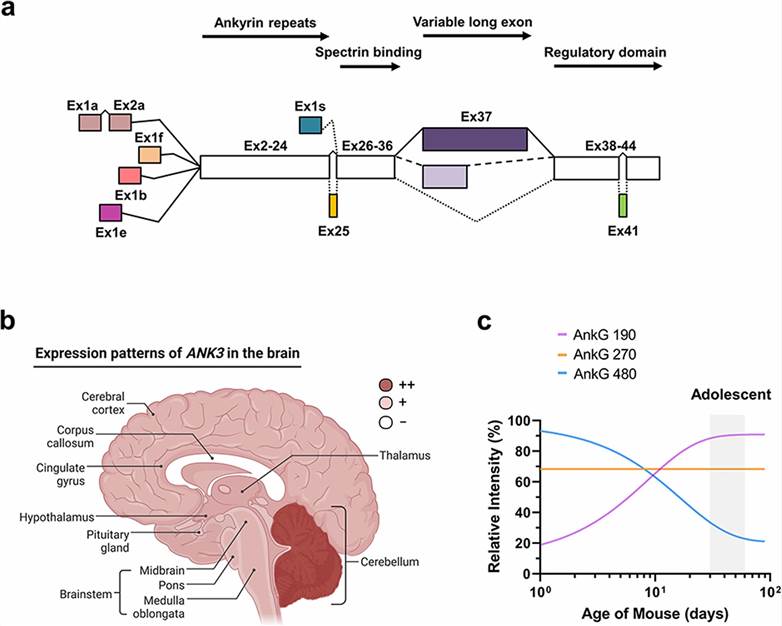ANK3 and Associated Diseases
As an expert in the field of gene therapy field, Creative Biolabs has established an advanced platform and a professional research team. We aim to provide reasonable solutions and one-stop services to help customers around the world advance gene therapy projects. We are pleased to share background information about gene therapy, and here we provide a brief introduction to the Ankyrin 3 (ANK3) gene.
Introduction to ANK3
ANK3, located at 10q21.2, consists of 44 exons, spanning about 700 kb on genomic DNA, with multiple splice variants. ANK3 belongs to a family of ankyrins that are essential for cell motility, proliferation, and maintenance of specialized membrane domains. Multiple isoforms of ANK3 exist in neurons and all contain three domains: an N-terminal membrane-binding domain, a spectrin-binding domain, and a C-terminal tail. The protein encoded by ANK3 plays a pivotal role in linking membrane proteins to the spectrin cytoskeleton. Furthermore, ANK3 is considered to be a crucial regulator in sodium channel function, cell adhesion, and neuronal development. Relevant pathways involving ANK3 include protein metabolism, transport to the Golgi apparatus, and subsequent modifications.
 Fig.1 Spatiotemporal expression of different isoforms of ANK3 in the brain. (Yoon, 2022)
Fig.1 Spatiotemporal expression of different isoforms of ANK3 in the brain. (Yoon, 2022)
ANK3 and Associated Diseases
Abnormalities in ANK3 lead to a variety of diseases. Diseases associated with ANK3 mainly include intellectual developmental disorders, neuromas, and autism spectrum disorders (ASDs).
- Intellectual developmental disorder
Disruption of the ANK3 gene is closely linked to this disease. The disease is a neurodevelopmental disorder characterized by delayed intellectual development. Symptoms include muscle cramps, sleep disturbance, and delayed language development. Children with intellectual developmental disabilities have difficulty learning, communicating, thinking rationally, judging and planning.
- Neuroma
Neuroma is a benign tumor of nerve tissue. It is a painful condition that commonly occurs as a benign growth of nerve tissue between the third and fourth toes. It causes pain, burning, and numbness between the toes and balls of the feet. ANK3 is closely associated with neuromas, and related pathways include signal transduction and Akt signal transduction.
- ASDs
ASDs are a group of neurodevelopmental disorders characterized by impairments in social interaction, communication, and language, as well as repetitive interests and behaviors. Since ANK3 is involved in schizophrenia and bipolar disorder, several studies have revealed an association between ANK3 mutations and susceptibility to ASD, and suggest common molecular pathophysiology between ASD and other neuropsychiatric disorders.
Potential Mechanisms
ANK3 is highly concentrated at the nodes of Ranvier of central nervous system neurons. Within the node of Ranvier where action potentials are actively propagating, ANK3 is thought to be an intermediate binding partner of fascin and voltage-gated sodium channels. Genetic deletion of ANK3 in multiple neuronal types suggests that ANK3 is closely related to the aggregation of voltage-gated sodium channels. Abnormalities of ANK3 may affect neuronal excitability through ion channel function, affecting synaptic development and function.
With advanced technology and a professional team, Creative Biolabs is committed to providing customized solutions according to the specific needs of customers. If you are interested in the field of gene therapy, please feel free to contact us to discuss your plans for sound advice and professional assistance.
Reference
- Yoon, S.; et al. Roles and mechanisms of ankyrin-G in neuropsychiatric disorders. Experimental & Molecular Medicine. 2022, 1-11. Distributed under Open Access license CC BY 4.0, without modification.
